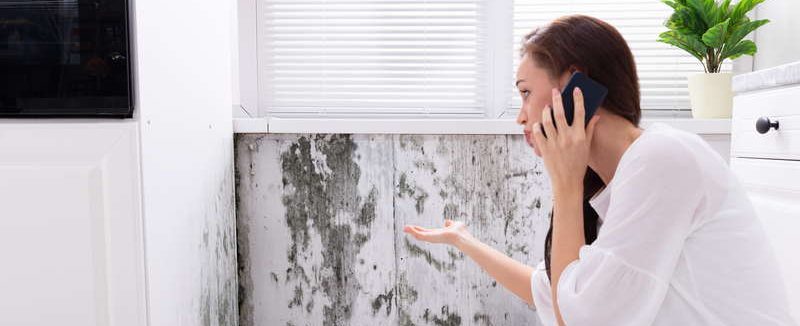Our range of solutions include Sempatap, Sempatap Thermal, Sempafloor and Dehumidifiers
Find the right product here to provide the best condensation solutions for your needs.
Sempatap
Sempatap Thermal
Sempafloor

Condensation
The air in a property holds water vapour in varying amounts. The amount is dependent on the room temperature, warm air can hold more moisture than cold air. When moist air comes into contact with a colder surface, the air is unable to retain the same amount of moisture and the water is released to form condensation on the surface which then triggers the mould to grow.
Even in warm, well ventilated houses condensation will occur in some form in the colder winter months. However, in poorly heated or inadequately ventilated dwellings, condensation can be serious and persistent and will lead to extensive mould contamination.
Homes which have insufficient insulation on the walls and loft space or properties which are of solid wall construction i.e. solid brick, stone or concrete are particularly susceptible to condensation. Certain types of construction and construction faults such as cold bridging exacerbate mould problems.
The incidence of condensation problems have increased tenfold in the past decade, a very high proportion are due to improvements that have been made to old homes or the style of construction for new build properties. Fifty years ago homes had natural ventilation with sash windows and open fires.
In the 21st century open fires are virtually unheard of, unless you live in the country and traditional sash windows have been replaced with varieties made from modern materials which has made homes virtually draught free. Furthermore, there has been great emphasis on insulating properties and the astronomical cost of heating ensures that nobody opens any windows for fear of losing their expensive heat.
That type of environment alone is unhealthy, however, when black mould takes hold even in small concentrations, it is a serious health risk which can result in asthma, bronchial complaints and other upper respiratory diseases.
It is estimated that a mould affected dwelling may contain between 3-7000 spores per cubic metre/1000 litres. There are several thousand species of mould that may occur in domestic dwellings, however, the most common are usually coloured black, green or white and are known as Aspergillus Niger, Penicillium spp and Cladosporium spp respectively.
Environmental Health Professional Practice. Mould Fungal Spores 1985 refers. The Royal Institute of Public Health and Hygiene 1993. Dampness, Mould Growth and Children’s Health. The British Medical Journal report Damp Housing Mould Growth and Symptomatic Health State 1989 confirms that active spores, even in small concentrations, are detrimental to the well being of adults and children. Mould also attacks foodstuffs resulting in dangerous toxins which in turn can give rise to food poisoning.
Mould is classified as a statutory nuisance under Section 82 of the Environmental Protection Act 1990. Under the Health and Housing Safety Rating Scheme 2006 (HHSRS) issued by DCLG, mould is a Category 1 hazard.







